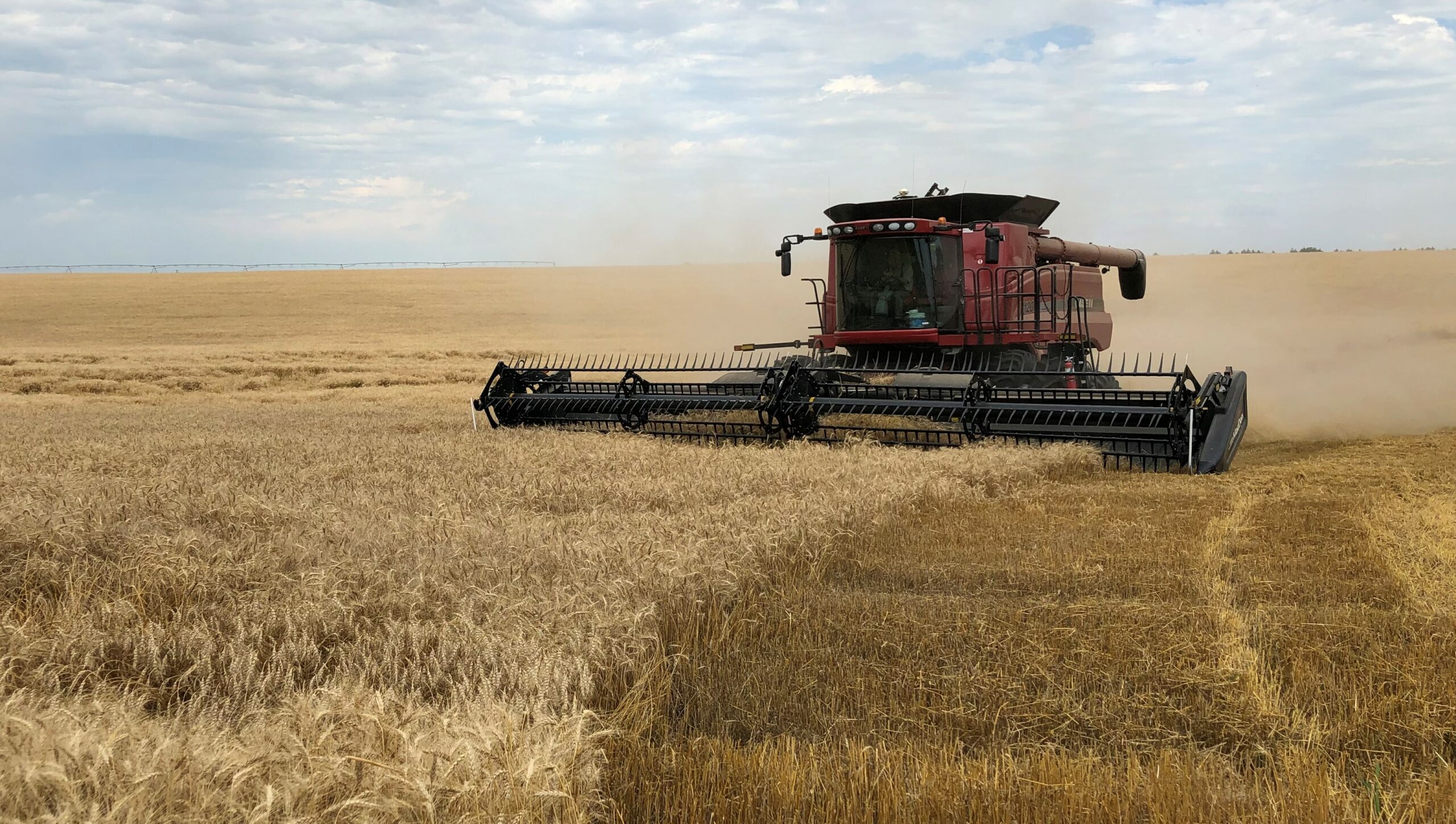Wheat harvest is right around the corner and people are already making plans on what to do afterward. With current high grain prices, many are planning to put in a double-crop of grain sorghum or soybeans to generate some always welcome cash. But we would like to remind people that there are other planting options after wheat harvest that can accomplish several goals, listed below:
Moisture management:
Of course, the primary concern with planting something right after wheat harvest is moisture. “We don’t get enough rain around here to do that!” we often hear. We hear that from growers everywhere, whether they receive 10 inches of rain a year or 60. Apparently, the area referred to as “around here” is pretty large! But, in these same areas, it is almost always necessary to spray the wheat stubble to kill abundant weed growth. If there is enough moisture to grow weeds, why can it not grow a plant with a purpose instead? Cover crops can be used to actually increase soil moisture for future crops. Yes, a growing cover crop does use more moisture than untilled, clean wheat stubble. While the amount of moisture used will vary from crop to crop and place to place, it is a common observation when actual soil moisture is measured that there will be 1-2 inches less profile soil moisture at the time of the first hard freeze in fall compared to clean stubble. But from this point on is where surprising things can happen. If the cover crop leaves a tall, persistent residue with good soil coverage, the percentage of rainfall that infiltrates into the soil rather than running off will increase. Secondly, the rate of moisture loss due to evaporation is greatly reduced from all that residue. Also, tall stubble can catch winter snow and hold it until it melts. Of course, it depends entirely on the amount of timing of precipitation, but it is very common to find that growing a cover crop in wheat stubble results in more soil moisture availability in the next crop, not less as is commonly assumed.
Usually, immediately after harvest, there is usually sufficient soil moisture to sprout a crop, but it is a common occurrence in the drier parts of the wheat-growing areas that there is simply zero moisture to sprout anything, especially if planting is delayed a few days after harvest. In these arid conditions, it may be necessary to delay planting until the rain has occurred, or until there is a strong likelihood of rain coming. If planting is delayed too long, perhaps it may be necessary to switch to a mix with a stronger cool-season component that will grow longer into fall.
Nitrogen fixation:
Including a healthy dose of legumes in a cover crop can definitely provide available nitrogen to a succeeding crop. Usually, the crop of choice in a rotation following wheat is a nitrogen-hungry crop such as corn. After wheat harvest, corn planting maybe ten or 11 months later. This leaves a long window for at least one nitrogen-fixing cover crop mixture, if not two, moisture allowing. Summer legumes like Sunn Hemp, Cowpeas, and Mung Beans can produce considerable nitrogen in the summer, and it is becoming increasingly common to follow the summer legumes up with a fall-planted cover crop of Cool-Season Legumes like Crimson Clover, Balansa Clover, Spring Peas, Winter Peas, or Hairy Vetch to produce even more nitrogen in fall and/or spring. This “relay” of nitrogen-fixing plants can produce enough nitrogen for even very high-yielding corn, as evidenced by many of our organic customers who have cranked out yields approaching 200 bushels an acre with no supplemental nitrogen.
Compaction alleviation:
A major yield-limiting factor in many fields is soil compaction. A compacted layer will reduce root growth, and a shallow root system will result in far lower availability of water and mineral nutrients to plants, even with sufficient rainfall and soil fertility. While the first plants that come to mind for compaction alleviation are deep tap-rooted plants like a Smart radish or okra, Compaction is best alleviated by the natural soil aggregating actions of a robust microbial population, which comes from being fed copious root exudates from a healthy community of plants from several plant families, for a nutritious, diverse “soup” to nourish the microbes. A good summer mix for compaction alleviation will include plants with deep taproots like okra and sunflower, as well as plants that produce a heavy flow of root exudates such as Sorghum-Sudan. In fall, plants such as nitro radish or Smart Radish can provide taproots, and fibrous root systems, like Annual Ryegrass, Cereal Rye, or Oats can produce a large volume of root exudates.
Livestock feed
Summer grazing for livestock:
To provide grazing in late summer, a blend of summer annual plants like Sorghum-Sudan, Millets, Cowpeas, Sunn Hemp, Mung Beans, Okra, Buckwheat, and Sunflower can provide grazing as soon as 30 days after planting, if there is sufficient moisture to sprout the seed. In a drought, each bite of feed becomes more valuable, so planting forage of some kind becomes more important as it gets drier.
Fall grazing for livestock:
providing fall grazing for livestock with a cover crop mix is somewhat different than providing summer grazing, particularly around the time of the first frost. Sorghums and sudangrasses can produce toxic prussic acid right after a frost, while most summer legumes and broadleaves lose their leaves shortly after frost, and others simply get mature and are not nutritious after frost (like Pearl Millet). There are two approaches for optimizing fall grazing, one is to plant summer species that retain leaves at frost (most grasses) or retain high protein seed (like Sunflowers), the other is to plant more cool-season plants that remain green after frost. Many cool-season plants struggle if planted right after wheat harvest in monoculture, especially in the southern US, but in a mixture with taller growing summer annuals they can survive better because the summer plants create a cooler microclimate. Another approach is to delay planting until cooler temperatures arrive in August. High daytime temperatures are not nearly as detrimental as high nighttime temperatures to cool-season plants, and in most areas, by August the nighttime temperatures begin to drop as day length shortens. But delayed planting also reduces yield potential.
Winter grazing for livestock:
Winter grazing requires plants that retain good nutritive value after a hard freeze, which many cool-season plants can do but only a few summer plants do. But summer plants can produce a tremendous volume that cool-season plants can’t match. Summer plants that can be planted immediately after wheat harvest, produce well and retain good nutrition after frost include forage sorghums (it is important to have varieties that do not produce much grain, to avoid acidosis and founder issues, so male sterile, long maturity, or photoperiod sensitive varieties are preferred) Sunflowers (primarily for the heads) Browntop Millet, Collards (which are a cool-season plant but with enough heat tolerance to be planted in summer) and Gourds (which produce fruit that is highly nutritious in fall).
Hay or silage:
Many plants can be planted for the purpose of producing hay or silage. For hay, having a product that will dry down and cure out is important, so plants with naturally fine stems (like Teff Grass or Foxtail Millet) or a dry stalk genetics (like Sweet Six) can provide advantages there. Cowpeas and mung beans can provide high protein. Most forbs like Sunflowers and Okra are too thick stalked to dry out well, while Sunn Hemp also has coarse stalks and poor dry down. For silage, coarse stalks are much less of an impediment, and plants like sunflowers can add valuable protein and oil content to silage. Forage sorghums are usually preferable to Sudan or Millet for silage.

